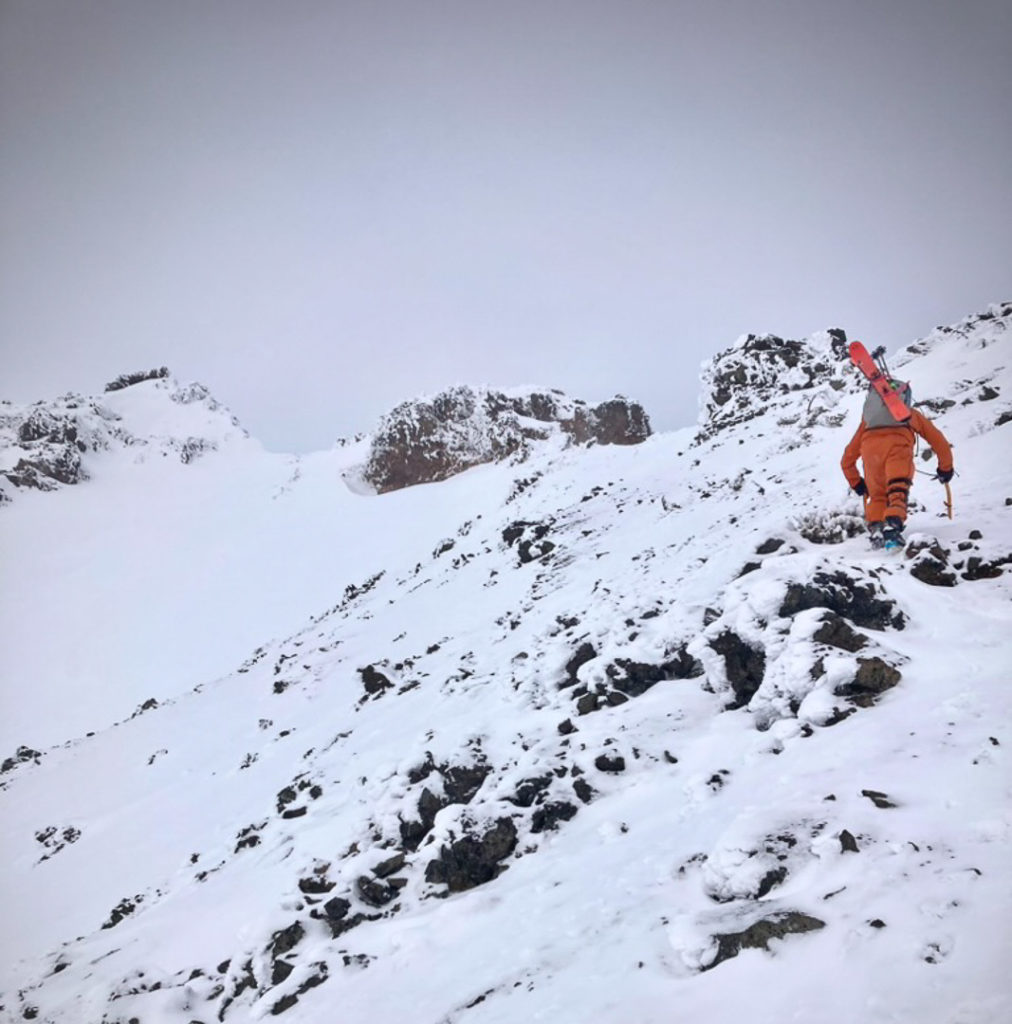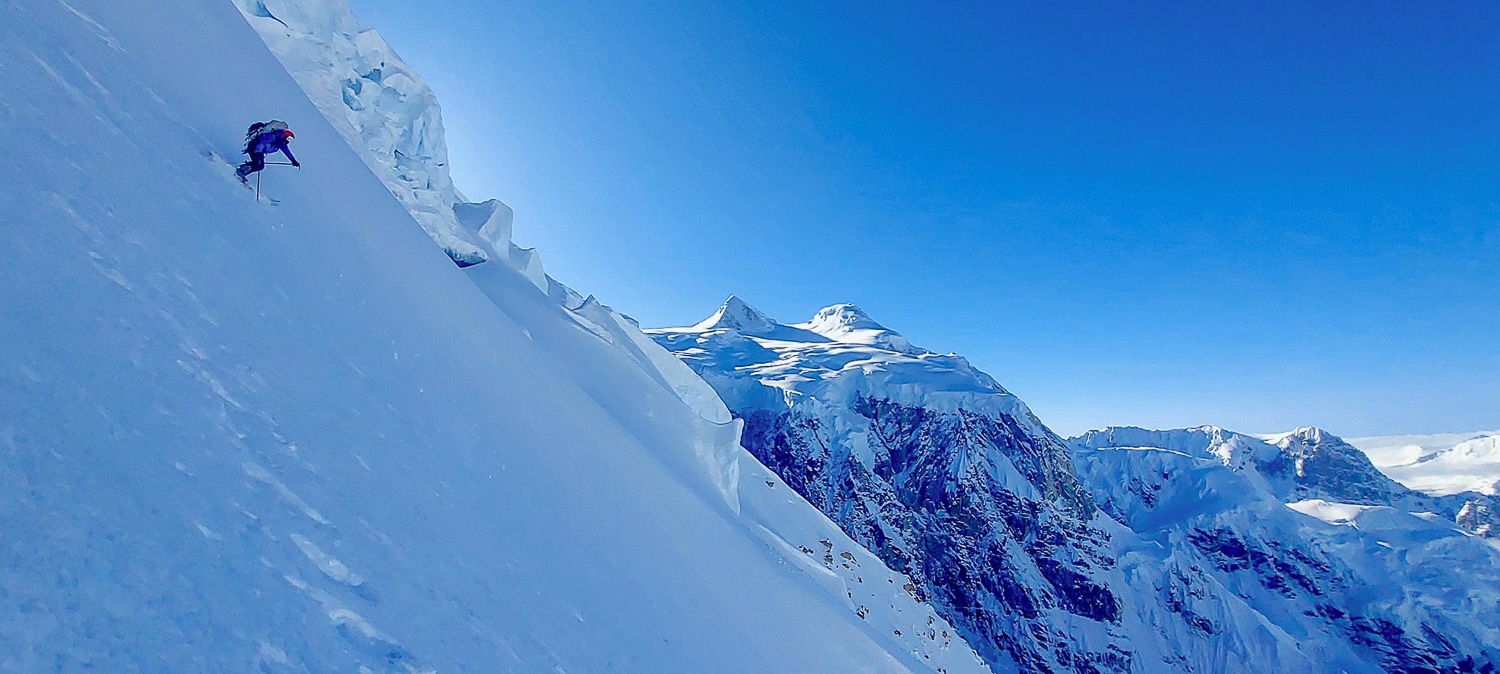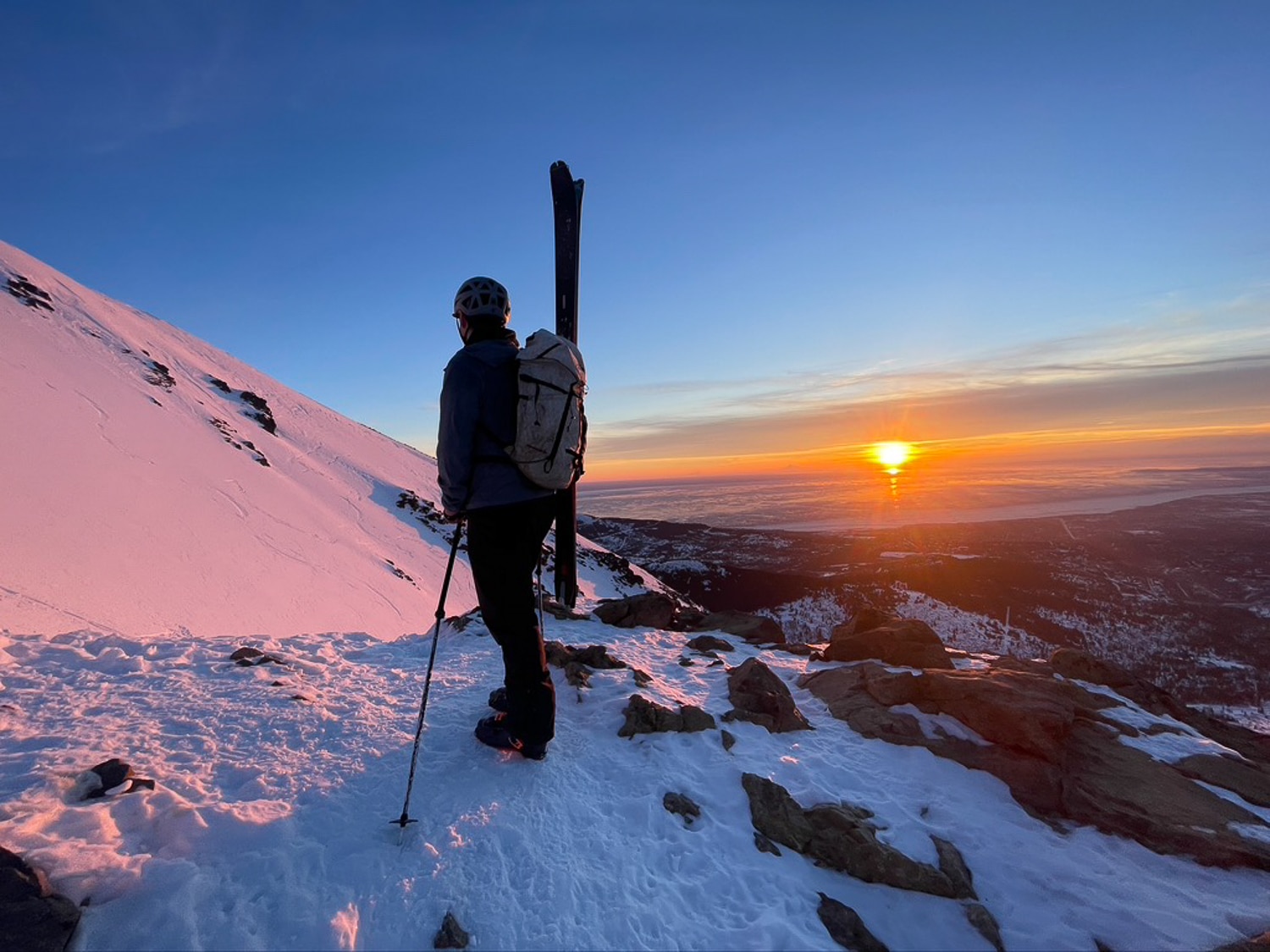Evidently there’s a name for that dizzying sensation while skiing in a ping pong ball: ski sickness.
The weather report read something like this: bluebird. With some parenting to take care of in town, I didn’t begin skinning until roughly noon. No problem: there was no reading between the lines on this forecast. About 300-400 feet below the ski line’s start, and I swear, it was seemingly out of nowhere—the weather shut down. Lickety-split. Graupel blew sideways. Visibility went from hi-def mountainscape to vertigo-inducing ping-pong ball. The light flat-lined. I pivoted.
While mostly sideslipping with a few intermittent turns for good measure to switch direction, my inability to sense up from down and vice versa was the first sign the shit was hitting the fan. As I moved onto a broader snow panel, feeling disoriented and dizzy with a hint of nausea, I decelerated to stop. Bending over to peer at the snow, which I couldn’t discern while upright (but knew was near my feet), I realized I was still moving with ample speed across the slope.
The repeat trip began at roughly 8 AM the following day. This time, I was with Joe—super reliable, younger, and rational—he’s a smoke jumper who sews his parachutes, after all.
The weather was a semi-known quantity; clear and cold until it wasn’t going to be clear, but snowy. NOAA forecast the shift in weather for a firm 4 PM. We boogied to the wilderness boundary on skins and made good time up a ridge to my previous day’s high point. The weather window remained wide open. We eventually topped out in a comfy and protected alcove and transitioned. And just like déja vû all over again, as Joe tapped the snow below us with his ski pole to get a sense of the wind-deposited snow, with a finger snap from the weather gods, it was curtains on the day: flat light and low vis.







Leave a Reply
You must be logged in to post a comment.